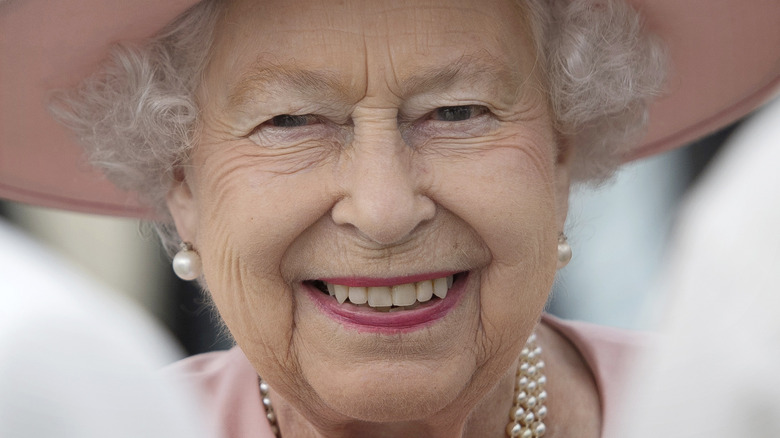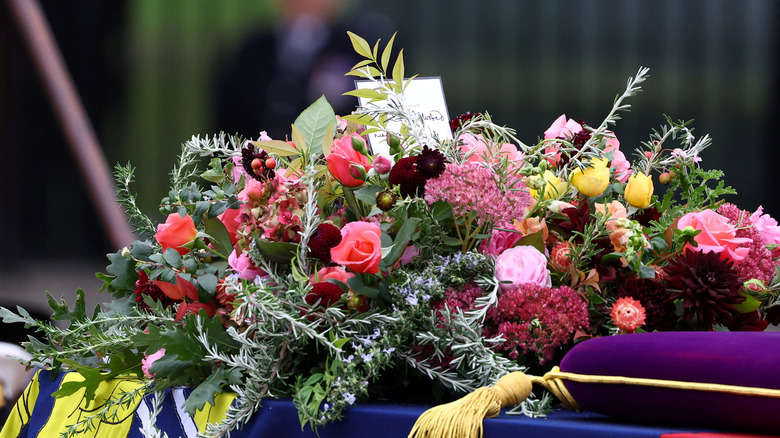The Secret Meaning Of The Flowers On The Queen's Coffin
On September 19, as residents of the United Kingdom paid their last respects to Queen Elizabeth II, the longest-serving monarch in British history, many gathered to witness the funeral procession to see her coffin taken from Westminster Hall to Westminster Abbey for her funeral. As Her Majesty's coffin began its final journey, members of the public could see it draped in the Royal Standard — a banner bearing the royal coat of arms — alongside the Imperial State Crown and other regalia.
Notably, a stunning wreath composed of various shades of gold, pink, and burgundy will sit atop the coffin during the procession and service. According to Mirror, the stunning floral arrangement is composed of white lilies, white roses, white freesia, white wax flower, and jasmine. In a statement released on Monday, Buckingham Palace revealed (via E! News) the special meaning of this foliage, and how it has been chosen "for its symbolism."
The flowers included a nod to Prince Phillip
The wreath adorning the monarch's coffin includes flowers specially requested by her son, King Charles. According to a statement released by Buckingham Palace (via Mirror), at the request of His Majesty, the wreath includes cuttings from the royal gardens of Buckingham Palace, Highgrove House and Clarence House.
All of the blooms and foliage were selected for symbolic reasons, including rosemary "for remembrance" and Myrtle, which symbolizes happy marriages. The Myrtle on the queen's coffin was grown from a sprig taken from Her Late Majesty's wedding bouquet in 1947, via ENews. The Myrtle is believed to be a nod toward the queen's relationship with Prince Phillip.
According to People, an assortment of the flowers donning the wreath had been hand-picked at the Balmoral estate — a very special place for the queen. Elizabeth spent many summers throughout her life at the beloved castle, including her final days before her death.
As noted by Wales Online, efforts went into ensuring the wreath was made with only sustainable or compostable materials, including omitting the use of floral foam and instead using oak branches and English moss.

